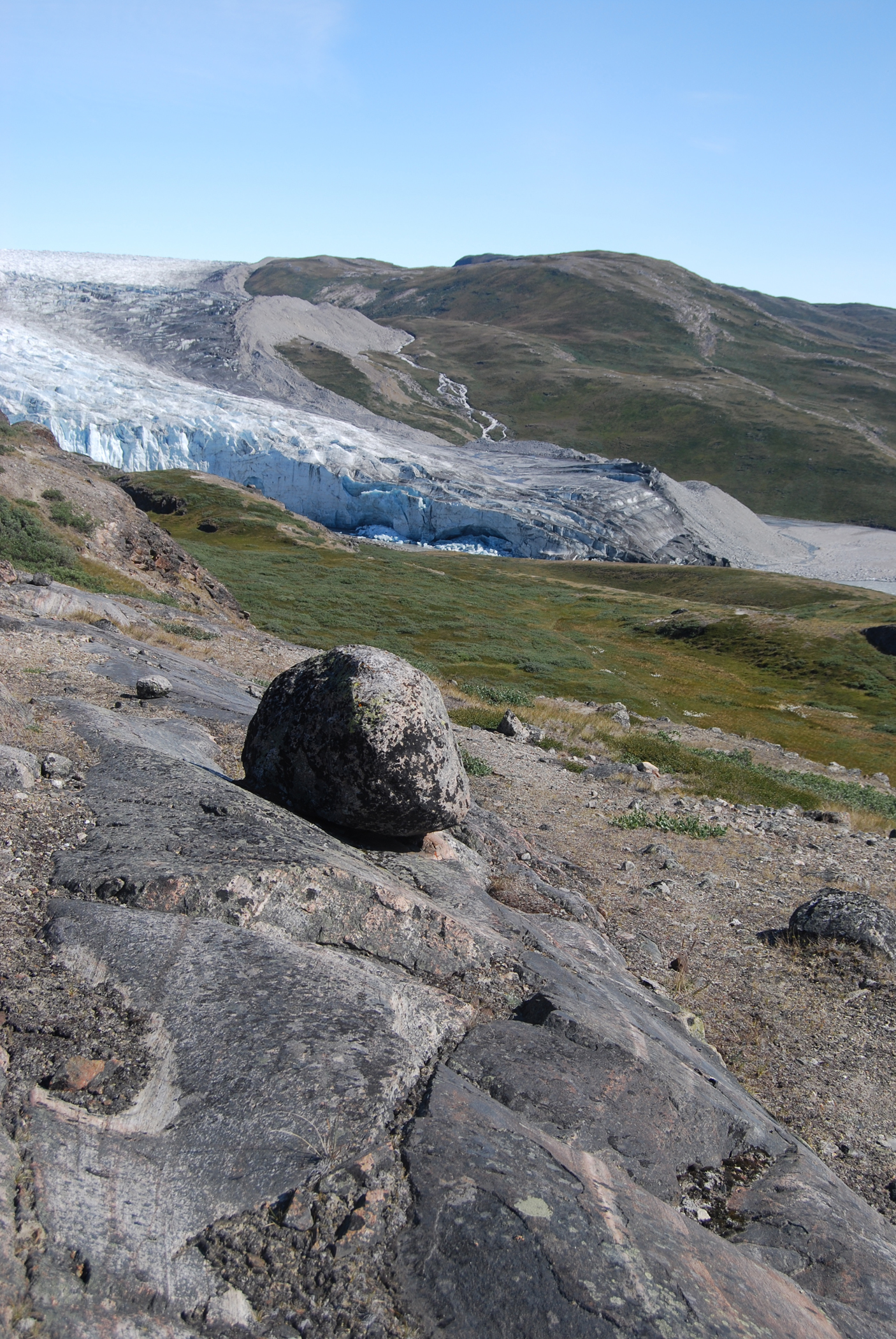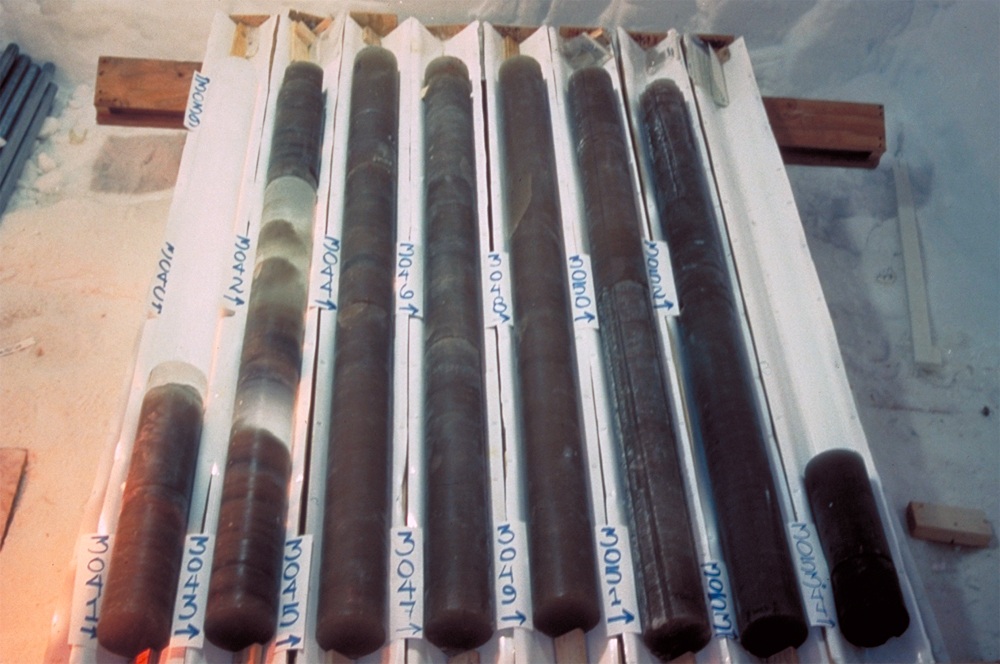
April 17, 2014
Some of the landscape underlying the massive Greenland ice sheet may have been undisturbed for almost 3 million years, ever since the island became completely ice-covered, according to researchers funded by the National Science Foundation (NSF).
Basing their discovery on an analysis of the chemical composition of silts recovered from the bottom of an ice core more than 3,000 meters long, the researchers argue that the find suggests "pre-glacial landscapes can remain preserved for long periods under continental ice sheets."
In the time since the ice sheet formed "the soil has been preserved and only slowly eroded, implying that an ancient landscape underlies 3,000 meters of ice at Summit, Greenland," they conclude.
They add that "these new data are most consistent with [the concept of] a continuous cover of Summit... by ice... with at most brief exposure and minimal surface erosion during the warmest or longest interglacial [periods]."

They also note that fossils found in northern Greenland indicated there was a green and forested landscape prior to the time that the ice sheet began to form. The new discovery indicates that even during the warmest periods since the ice sheet formed, the center of Greenland remained stable, allowing the landscape to be locked away, unmodified, under ice through millions of years of cyclical warming and cooling.
"Rather than scraping and sculpting the landscape, the ice sheet has been frozen to the ground, like a giant freezer that's preserved an antique landscape", said Paul R. Bierman, of the Department of Geology and Rubenstein School of the Environment and Natural Resources at the University of Vermont and lead author of the paper.
Bierman's work was supported by two NSF grants made by its Division of Polar Programs, 1023191 and 0713956. Thomas A. Neumann, also of the University of Vermont, but now at NASA's Goddard Space Flight Center, a co-author on the paper, also was a co-principal investigator on the latter grant.
Researchers from Idaho State University, the University of California, Santa Barbara, and the Scottish Universities Environmental Research Centre at the University of Glasgow also contributed to the paper.
The research also included contributions from two graduate students, both supported by NSF, one of whom was supported by the NSF Graduate Research Fellowships Program.
The team's analysis was published on line on April 17 and will appear in Science magazine the following week.
Understanding how Greenland's ice sheet behaved in the past, and in particular, how much of the ice sheet melted during previous warm periods as well as how it re-grew is important to developing a scientific understanding of how the ice sheet might behave in the future.
As global average temperatures rise, scientists are concerned about how the ice sheets in Greenland and Antarctica will respond. Vast amounts of freshwater are stored in the ice and may be released by melting, which would raise sea levels, perhaps by many meters.
The magnitude and rate of sea level rise are unknown factors in climate models.

The team based its analysis on material taken from the bottom of an ice core retrieved by the NSF-funded Greenland Ice Sheet Project Two (GISP2), which drilled down into the ice sheet near NSF's Summit Station. An ice core is a cylinder of ice in which individual layers of ice, compacted from snowfall, going back over millennia can be observed and sampled.
Summit is situated at an elevation of 3,216 meters (10,551 feet) above sea level.
In the case of GISP2, the core itself, taken from the center of the present-day Greenland ice sheet, was 3,054 meters (10,000 feet) deep. It provides a history of the balance of gases that made up the atmosphere at time the snow fell as well as movements in the ice sheet stretching back more than 100,000 years. It also contains a mix of silts and sediments at its base where ice and rock come together.
The scientists looked at the proportions of the elements carbon, nitrogen and Beryllium-10, the source of which is cosmic rays, in sediments taken from the bottom 13 meters (42 feet) of the GISP2 ice core.
They also compared levels of the various elements with soil samples taken in Alaska, leading them to the conclusion that the landscape under the ice sheet was indeed an ancient one that predates the advent of the ice sheet. The soil comparisons were supported by two NSF grants: 0806394and 0806399.
-NSF-
Media Contacts
Joshua Brown, University of Vermont, (802) 656-3039, joshua.e.brown@uvm.edu
Principal Investigators
Paul Bierman, University of Vermont, (802) 656-4411, pbierman@uvm.edu
